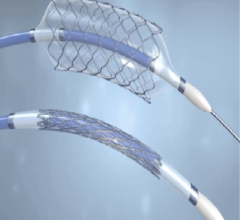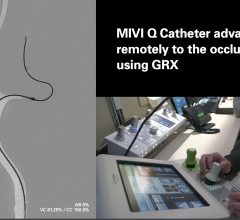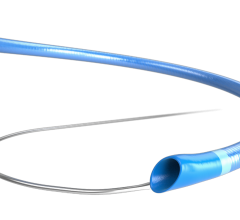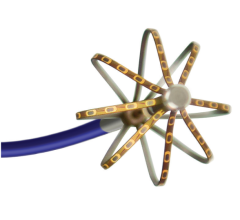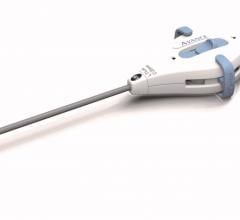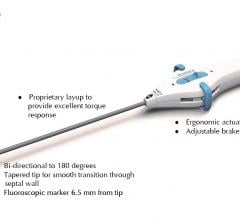September 11, 2007 – Improving how healthcare providers follow proven protocols could reduce the risks of subsequent heart problems for heart disease patients, according to a study reported in a cardiovascular surgery supplement of Circulation: Journal of the American Heart Association.
A study of the American Heart Association's Get With The GuidelinesSM (GWTG) database found significant differences in how hospitals carry out many of the association's secondary prevention recommendations.
Specifically, patients who received percutaneous catheter intervention (PCI) were more likely to get the proven measures that could significantly reduce their risks for later heart attack, as compared to patients who underwent coronary artery bypass graft surgery (CABG) or no intervention at all.
"GWTG is an evidence-based, hospital quality improvement program that helps ensure patients receive quality care during treatment and discharge based on specific guidelines that will reduce the risk of secondary cardiac events," said Loren F. Hiratzka, M.D., lead author of the study and co-author of the 2006 GWTG update. "The program empowers providers to consistently treat heart and stroke patients according to the most up-to-date guidelines."
Hiratzka said a key part of GWTG is the education healthcare providers give when a patient is discharged from the hospital after a heart attack or other cardiac event. The guidelines call for patients to receive specific instructions, counseling and medication recommendations -- all of which can reduce the progression of atherosclerosis, the hardening of arteries that can contribute to heart disease. Most hospitals that implement GWTG realize measurable results, including improved patient outcomes.
"The scientific evidence shows us that, when used appropriately and consistently, these performance measures can save lives," Hiratzka said. "The challenge is to ensure that hospitals are providing this care for every patient, every time."
Researchers conducted a study of the GWTG database to determine to what degree hospitalized patients with coronary artery disease were receiving the appropriate medications and advice at discharge. They divided that data of 119,106 hospitalized patients into three groups: those who received CABG (14,118); those who received PCI (58,702), which included balloon angioplasty and stenting to open blocked arteries; and those who didn't receive either intervention (46,286).
Surprisingly, researchers found that CABG patients were less likely than PCI patients to receive all of GWTG's recommended measures, even when taking into account the exclusion of certain patients for which the measures wouldn't be medically appropriate.
"CABG patients are in the hospital for several days after the operation, during which time we have multiple opportunities to stress to them the Get With The Guidelines prevention measures," said Hiratzka, chair of the American Heart Association's Council of Cardiovascular Surgery and Anesthesia and medical director of cardiac surgery, TriHealth, Inc., Cincinnati, Ohio. "Some PCI patients tend to be in the hospital for less than 24 hours; even then, healthcare providers have opportunities before and after the procedure to meet with patients and their families to review these topics."
Get With The Guidelines performance measures include: prescribing angiotensin-converting enzyme (ACE) inhibitors, when appropriate; recommending that patients take aspirin; prescribing appropriate beta blockers for blood pressure and heart rate control; giving smoking cessation advice if patients are smokers; and prescribing statins and other kinds of cholesterol lowering medications.
The study found these measures were provided as follows for patients without exclusions or contraindications for each group:
-- ACE (angiotensin-converting enzyme) inhibitors
* PCI patients - 74 percent
* CABG patients - 57.3 percent
* No intervention patients - 66.3 percent
-- Aspirin therapy
* PCI patients - 99.4 percent
* CABG patients - 97.1 percent
* No intervention patients - 94.5 percent
-- Beta blockers
* PCI patients - 91 percent
* CABG patients - 90.8 percent
* No intervention patients - 88.2 percent
-- Smoking cessation counseling
* PCI patients - 84.8 percent
* CABG patients - 82.4 percent
* No intervention patients - 73.9 percent
-- Lipid drugs
* PCI patients - 89.2 percent
* CABG patients - 77.4 percent
* No intervention patients - 72.3 percent
Those patients who did receive all of the recommended performance measures were more often PCI patients -- 71.5 percent of those patients received all the measures, while 65.1 percent of all CABG patients received all of the measures and 62.1 percent of the no-intervention group of patients received all the measures.
"Even though these numbers are better than they have been, they are not as good as they could be in any of the groups -- in particular the group at highest risk, the surgical patients," said Hiratzka. "Though there were limitations to this study, it suggests that we need to improve our systems of care so that they are better geared to making sure that all heart disease patients are getting the information, guidance and treatment they need to prevent future cardiac events."
Co-authors are Kim A. Eagle, M.D.; Li Liang, Ph.D.; Gregg C. Fonarow, M.D.; Kenneth A. LaBresh, M.D. and Eric D. Peterson, M.D. for the GWTG Steering Committee.
Information on “Get With The GuidelinesSM(GWTG),” the American Heart Association and American Stroke Association's evidenced-based quality improvement program that helps hospitals align their care for coronary artery disease, stroke and heart failure patients with the latest scientific guidelines, is available at www.americanheart.org/getwiththeguidelines.
Source: Circulation: Journal of the American Heart Association
For more information: www.americanheart.org

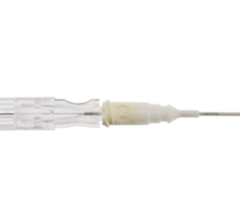
 April 03, 2024
April 03, 2024 

